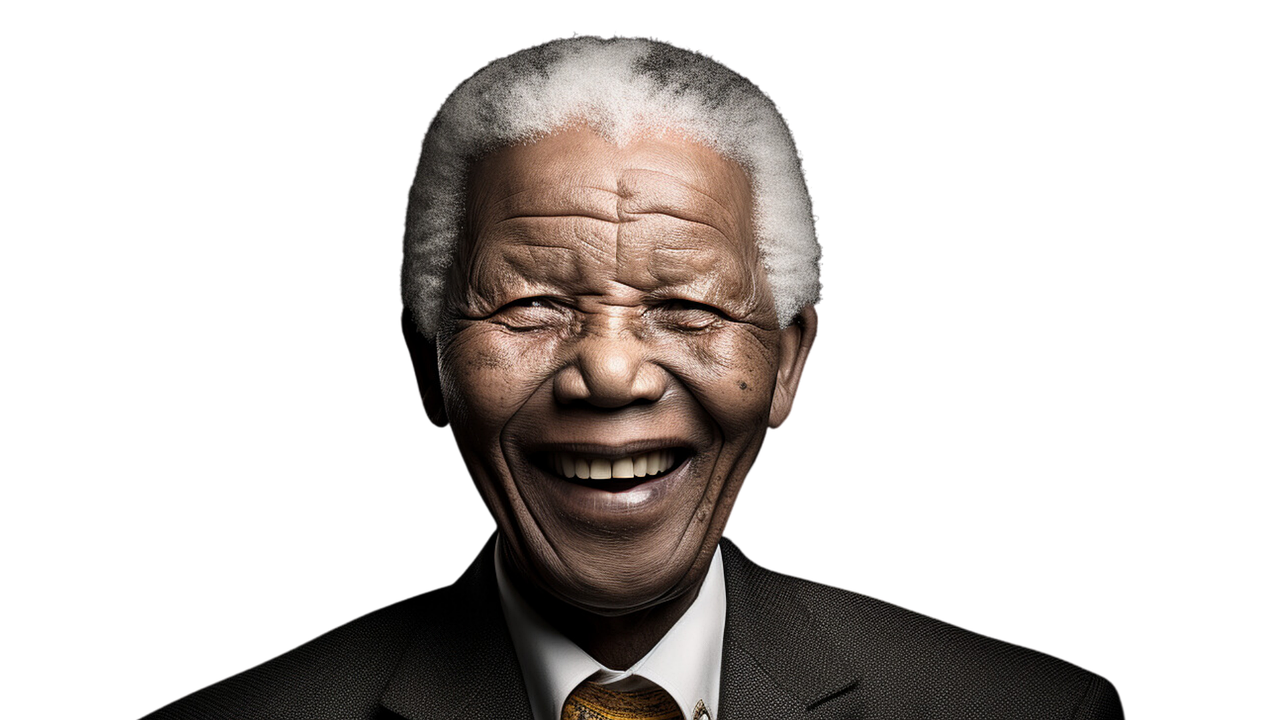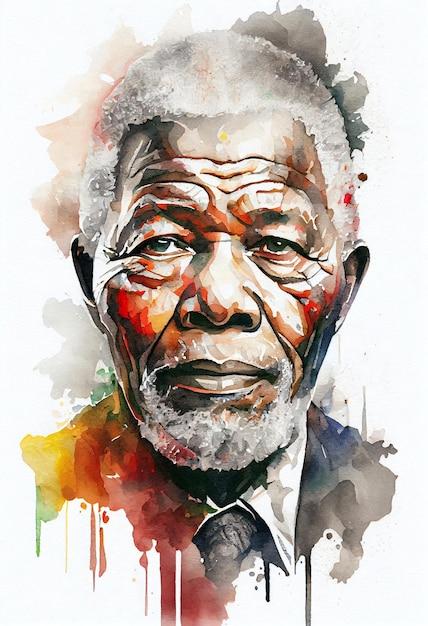Nelson Mandela, a towering figure in South African history, dedicated his life to fighting against the unjust system of apartheid and championing equality and freedom for all. Born in 1918, Mandela spent a significant portion of his life challenging the oppressive policies enforced by the apartheid regime. In this blog post, we will explore the difficulties faced by Mandela in his unwavering pursuit of justice and delve into his vision for a free and democratic South Africa.
Mandela’s disdain for apartheid was evident throughout his life, and he vehemently opposed the racial segregation it imposed. The apartheid system, which classified individuals into racial groups and denied basic rights to non-Whites, was a blatant violation of human dignity. Mandela believed that true freedom could only be achieved by dismantling this unjust system, and he dedicated himself to this cause. Through his unwavering determination, he became an icon for justice and equality, not only in South Africa but around the world.
Join us as we uncover the challenges faced by Mandela, from his imprisonment on Robben Island to his tireless advocacy, and how he ultimately triumphed against apartheid. Together, we will shed light on Mandela’s dream of a unified South Africa, where all individuals, regardless of race, could live freely and equally, fulfilling the dreams and ideals that he set for the future.

Nelson Mandela’s Hurdles: Overcoming the Odds
Nelson Mandela, an iconic figure in the fight against apartheid in South Africa, faced numerous difficulties throughout his life. From political persecution to imprisonment, Mandela’s journey was far from smooth sailing. In this section, we will delve into the challenges he encountered and how he triumphed against all odds.
Political Persecution: The Thorn in Mandela’s Side
Mandela’s commitment to eradicating apartheid made him a target of political persecution. His involvement with the African National Congress (ANC), a prominent anti-apartheid organization, raised eyebrows among the authorities. Despite his peaceful approach, the government clamped down on his activism, leading to frequent arrests and harassment.
Imprisonment: Behind Bars but Not Broken
One of the most defining difficulties Mandela faced was his unjust imprisonment. In 1964, he was sentenced to life in prison for his anti-apartheid activities. Locked away in Robben Island for 27 long years, Mandela found himself confined within the four walls of a cell, separated from his loved ones and the world outside.
Isolation: From Freedom Fighter to Isolated Inmate
Imprisonment brought with it a sense of isolation for Mandela. He was cut off from the external world, unable to witness the day-to-day struggles of his fellow activists. This relentless separation posed a significant emotional burden on him and countless others incarcerated alongside him.
Endurance: Weathering the Storm of Hardship
Mandela’s resilience was truly remarkable. Despite the immense physical and emotional toll of his suffering, he managed to remain steadfast in his beliefs. He wrote letters, participated in secret studies, and engaged in conversations with his fellow prisoners to keep his spirit alive, even in the darkest of times.
International Pressure: The World Takes Notice
As Mandela’s story gained international attention, pressure mounted on the South African government to release him and end apartheid. Global leaders, celebrities, and activists joined forces to advocate for his freedom, creating a groundswell of support that could not be ignored.
Negotiations: Charting the Path to Equality
When Mandela was finally released from prison in 1990, he faced the daunting task of navigating negotiations with the South African government. These talks aimed to dismantle apartheid and establish a democratic society that ensured equal rights for all citizens. It was a delicate balance between demanding justice and preventing the country from descending into chaos.
Legacy: From Prison to Presidency
Despite the arduous journey, Nelson Mandela emerged as a symbol of peace, reconciliation, and unity. In 1994, he became South Africa’s first black president in a free democratic election. His leadership and ability to bridge the gap between disparate groups ushered in a new era for the nation, leaving an indelible mark on history.
Nelson Mandela faced countless obstacles along his path to freedom and equality. From political persecution to unjust imprisonment, Mandela’s resilience, determination, and unwavering belief in justice propelled him forward. His courage and conviction continue to inspire generations, serving as a testament to the power of the human spirit in the pursuit of a better world.
Note: This blog post was not endorsed or sponsored by any organization or entity.

FAQ: Difficulties Faced by Nelson Mandela
Introduction:
Nelson Mandela, the revered anti-apartheid activist and former President of South Africa, faced numerous challenges on his quest for freedom and equality. In this FAQ-style subsection, we’ll delve into some of the key difficulties Mandela encountered during his journey, as well as his perspectives on apartheid and his vision for a better future.
What were Nelson Mandela’s thoughts on apartheid
Nelson Mandela vehemently opposed apartheid, the oppressive racial segregation policy implemented in South Africa from 1948 to 1994. He saw it as a deplorable system that stifled humanity, equality, and progress. Mandela firmly believed in the inherent worth of every individual, regardless of their race, and fought tirelessly to dismantle apartheid and establish a democratic society.
What is apartheid, and what did Nelson Mandela think of it in Class 10
Apartheid was a system of institutionalized racial discrimination and segregation enforced by the South African government. In his youth, during his time in Class 10, Nelson Mandela experienced firsthand the unjust and oppressive nature of apartheid. Mandela recognized that apartheid was built upon a foundation of prejudice, inequality, and denial of basic human rights. This shaped his determination to challenge the system and work towards a more just society.
What were the challenges faced by Nelson Mandela
Nelson Mandela confronted numerous challenges throughout his life, many of which were a direct result of his strong opposition to apartheid. Firstly, he endured multiple arrests and imprisonments, spending a total of 27 years behind bars. Mandela faced immense physical and emotional suffering during his lengthy incarceration, but his spirit remained unbroken.
Additionally, Mandela’s family and loved ones faced intense scrutiny and persecution due to his activism. From constant surveillance to threats and intimidation, those close to Mandela were also subject to the pains inflicted by the apartheid regime. However, Mandela’s resilience and unwavering commitment to justice fueled his determination to continue the fight, even in the face of adversity.
What did Nelson Mandela consider true freedom
According to Nelson Mandela, true freedom goes beyond the mere absence of physical constraints. For him, true freedom meant the eradication of all forms of oppression and discrimination. It entailed the establishment of a society where individuals enjoy equal rights, opportunities, and dignity. Mandela believed that true freedom could only be achieved through the dismantling of apartheid and the creation of a democratic and inclusive South Africa.
What was Nelson Mandela’s main purpose in his pursuits
Nelson Mandela’s main purpose was to bring an end to apartheid and establish racial equality in South Africa. He dedicated his life to fighting for the rights of black South Africans and promoting unity among all racial and ethnic groups. Mandela believed in the power of forgiveness, compassion, and reconciliation to heal the wounds caused by apartheid and build a harmonious nation.
What ideals did Nelson Mandela set for the future
Nelson Mandela set forth a vision of a future South Africa characterized by equality, social justice, and unity. He believed in fostering a society where race, ethnicity, or economic background would not determine an individual’s worth or opportunities. Mandela advocated for education, healthcare, and economic development for all South Africans, with a strong emphasis on empowering the marginalized and addressing historical injustices.
What did the people of South Africa achieve in the end
Through their courageous struggle and collective efforts, the people of South Africa, led by Nelson Mandela, achieved the dismantling of apartheid and the establishment of a democratic South Africa. Mandela became the first black President of South Africa in 1994 after the country’s first non-racial elections. This marked a significant milestone in the history of South Africa and symbolized the triumph of justice, equality, and the resilience of the human spirit.
Conclusion:
Nelson Mandela’s journey was fraught with difficulties, but his unwavering determination and commitment to justice propelled him forward. Through his fight against apartheid, Mandela became a symbol of hope, resilience, and the power of unity. The challenges he faced only strengthened his resolve to create a better future for all South Africans, a legacy that continues to inspire generations to come.
Note: This blog post does not cover all aspects of Nelson Mandela’s life and struggles, but aims to provide an informative overview.
